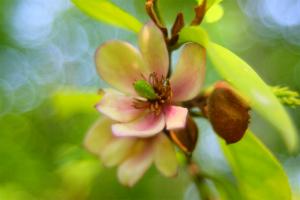How To Use Fertilizer In Potted Plants
Potted plants are a popular way for people to add some greenery to their homes, balconies or gardens. However, potted plants require regular maintenance, and one important aspect of that maintenance is fertilization. Fertilizer provides plants with the necessary nutrients they need for healthy growth and development. In this article, we will discuss how to use fertilizer in potted plants to ensure they thrive and stay healthy.
1. Choose the Right Fertilizer
There are many different types of fertilizers available on the market, and it is important to choose the right one for your potted plants. The most common types of fertilizers are water-soluble, granular, and slow-release fertilizers. Water-soluble fertilizers are great for potted plants because they are easy to apply and provide nutrients quickly. Granular fertilizers are best for outdoor potted plants because they release nutrients slowly over time. Slow-release fertilizers are ideal for indoor plants because they release nutrients gradually over several months. When choosing a fertilizer, always read the label and choose one that is appropriate for your specific plant and its needs.
2. Use the Proper Amount of Fertilizer
Using the right amount of fertilizer is crucial for the health of your potted plants. Over-fertilizing can burn the roots, whereas under-fertilizing can stunt growth and affect a plant's ability to flower or produce fruit. Always follow the instructions on the fertilizer label and use the recommended amount for your plant. As a general rule of thumb, one teaspoon of water-soluble fertilizer per gallon of water is typically sufficient for most potted plants.
3. Apply Fertilizer at the Right Time
Timing is important when it comes to fertilizing potted plants. In general, the best time to apply fertilizer is during the growing season when plants are actively growing. For indoor plants, this is typically during the spring and summer months. For outdoor plants, this will depend on your specific location and climate. As a general rule, apply fertilizer after the last frost in the spring and before the first frost in the fall.
4. Apply Fertilizer Properly
When applying fertilizer, it is important to do it properly to ensure the best results. For water-soluble fertilizers, apply the solution directly to the soil around the plant's roots. For granular fertilizers, lightly sprinkle the fertilizer around the base of the plant, being careful not to get any on the leaves or stem. Slow-release fertilizers usually come in the form of pellets or sticks that can be inserted directly into the soil. Always water your plants thoroughly after fertilizing to help distribute the nutrients evenly throughout the soil.
5. Watch for Signs of Over Fertilization
One of the most common mistakes people make when fertilizing their potted plants is over-fertilizing. Signs of over fertilization include leaves turning yellow or brown, wilting, and stunted growth. If you notice any of these signs, stop fertilizing immediately and flush the soil with water to help remove excess fertilizer. In the future, be sure to follow the instructions on the fertilizer label and avoid over-fertilizing.
Using fertilizer in potted plants is an excellent way to ensure they receive the nutrients they need to stay healthy and thrive. By choosing the right fertilizer, using the proper amount, applying it at the right time and doing it properly, you can help ensure your potted plants stay beautiful and healthy for years to come.

 how many times do yo...
how many times do yo... how many planted tre...
how many planted tre... how many pine trees ...
how many pine trees ... how many pecan trees...
how many pecan trees... how many plants comp...
how many plants comp... how many plants can ...
how many plants can ... how many plants and ...
how many plants and ... how many pepper plan...
how many pepper plan...





























